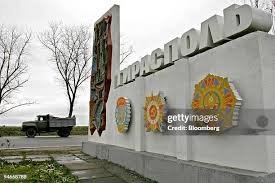The Current Situation in Transnistria: A Focus on Politics and Economy

Introduction
Transnistria, a narrow strip of land claimed by Moldova but self-declared as an independent republic, has become an area of geopolitical interest and concern in recent years. As an unrecognised entity, this region’s status raises questions about international law, regional stability, and human rights. With the ongoing conflict in Ukraine and tensions between Russia and the West, Transnistria’s fate remains uncertain and increasingly relevant.
Background of Transnistria
The Transnistrian region broke away from Moldova in the early 1990s following a violent conflict that left over 1,000 people dead. Since then, it has operated with its own government and currency. The region is comprised mainly of ethnic Russians and Ukrainians, and the presence of Russian troops has solidified its de facto independence, despite little international recognition.
Recent Developments
In 2023, the political climate in Transnistria has become more precarious. Following Russia’s invasion of Ukraine, fears of a wider conflict spreading into Moldova have escalated. President Maia Sandu of Moldova has voiced concerns about the potential destabilisation of the region if tensions mount. Moreover, reports of increased military activities and the strengthening of security measures in Transnistria have drawn the attention of both the local population and international observers.
Economically, Transnistria faces significant challenges. Isolated due to its unrecognised status, the region struggles with trade and investment. Recent analyses indicate that the economies of Eastern European countries, including Transnistria, are affected by rising energy prices and supply chain disruptions caused by the ongoing war in Ukraine.
International Response and Outlook
The international community remains divided on how to approach the situation. Minor diplomatic efforts have been made to encourage negotiations between Transnistria and Moldova, but substantial progress has not been achieved. The situation in Transnistria is exacerbated by the broader geopolitical tensions in Eastern Europe, which means that its future could be closely tied to developments in Ukraine as well as Russia’s actions in the region.
Conclusion
As the world watches the unfolding events in Eastern Europe, Transnistria remains a focal point of concern for international security and regional stability. The combination of a simmering military presence, economic hardship, and the impact of Ukrainian conflict levels adds to the complexity of the situation. The future of Transnistria remains uncertain, and continued monitoring of the region will be vital for understanding the unfolding geopolitical landscape in Europe.
